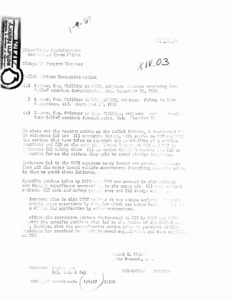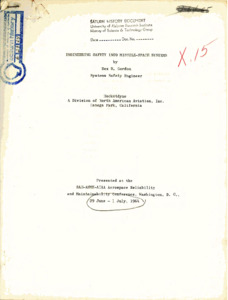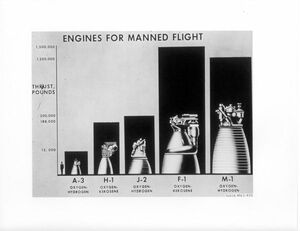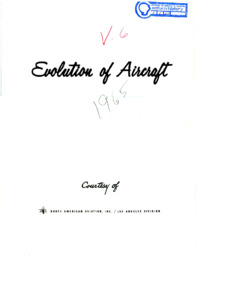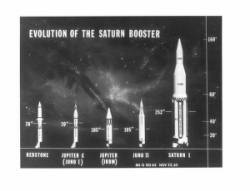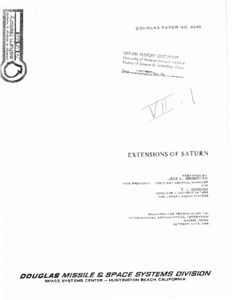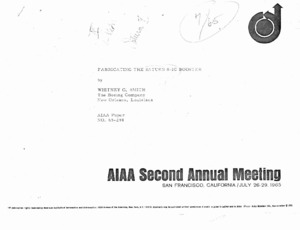
Browse Items (970 total)
Sort by:
-
"Engineering Capabilities Presentation."
This Engineering Capabilities Presentation lists the competence and capability that has been demonstrated by the Space Support Division of Sperry Rand Corporation while fulfilling contractual commitments in the aerospace industry. This is a preliminary presentation; the preparation of a complete capabilities history of the division is currently in the developmental stage. The Capabilities Experience Summary is comprised of ten categories. e.g. Category 1 - Aeronautics, etc. The capabilities reported herein were performed by the Space Support Division under Contract NAS8-20055 to the National Aeronautics and Space Administration, George C. Marshall Flight Center, Astrionics Laboratory, Huntsville, Alabama. -
"Engineering Safety Into Missile-Space Systems."
Safety Engineering, as applied to complex missile and space systems, has developed a new methodology referred to as "System Safety Engineering." The requirement for a comprehensive approach to safety which is included as a contractually covered adjunct to the design, development, and operational phases of a systems life cycle has become apparent from costly missile mishap experience. The general concepts and accomplishments of this new engineering discipline are described along with possible beneficial relationships with Reliability and other recognized organizational elements engaged in safety related activities. -
"Engines for Manned Flight."
8 x 10 inch black and white photograph.; Images included are: A-3 oxygen-hydrogen, H-1 oxygen-kerosene, J-2 oxygen-hydrogen, F-1 oxygen-Kerosene, M-1 oxygen-hydrogen. The thrust pounds is also listed.Shows them in reference to a human as a scale. -
"Evolution of a Space Capability."
Two different organizational charts. -
"Evolution of Aircraft."
Illustration depicting the history of airplanes across a graph. -
"Evolution of the Saturn Booster."
8 x 10 inch Black & White photograph. MS-G 103-63 Nov. 22, 63 is on the photograph. Displays the evolution of space-rocket designs side-by-side. -
"Evolutionary Steps in S-IVB Development."
The injection stage of a multistage launch vehicle must be partially a velocity stage and partially a spacecraft; it must not only boost the payload, it must also perform cooperative mission operations with the payload after orbital insertion. These hybrid requirements result in intrinsic stage versatility which permits consideration of new and challenging missions for the stage which were unanticipated during initial design.; Prepared by T. J. Gordon, Director, Advance Space Stations and Planetary Systems, Space Systems Center, Douglas Aircraft Company, Huntington Beach, California. -
"Extensions of Saturn."
This paper discusses the possible applications of Saturn vehicles to future space exploration. Potential missions utilizing Apollo derived hardware are examined. Research, development, and operations in earth orbit as well as lunar exploration, unmanned and manned interplanetary exploration are reviewed. These hypothetical missions are discussed in the context of the present and potential capability of three configurations of the Saturn vehicle; an uprated Saturn I, a three-stage Saturn V and a four-stage Saturn V. NOTE: Work presented herein was conducted by the Douglas Missiles and Space Systems Division under company-sponsored research and development funds. Therefore, the concepts and objectives described within this paper reflect the opinions of the authors and do not necessarily constitute endorsement by NASA, the Air Force, or any other U.S. Government organization. The nominal performance numbers presented are typical of the current configurations and possible future vehicle configurations. -
"Fabricating the Saturn S-IC Booster."
AIAA Second Annual Meeting, San Francisco, California. Discusses the fabrication process of the Saturn S-IC booster. -
"Fabrication of Plenum Tanks by Explosive Forming and Electron Beam Welding."
This report presents the results of a program initiated to study the use of explosive forming and electron beam fusion welding techniques in the fabrication of pressurized cryogenic materials containers. Using these techniques, vessels were successfully formed from 304 stainless steel and X7106 aluminum alloy in the T63 condition.; Manufacturing Research and Technology Division.; Manufacturing Engineering Laboratory.; Research and Development Operations.
